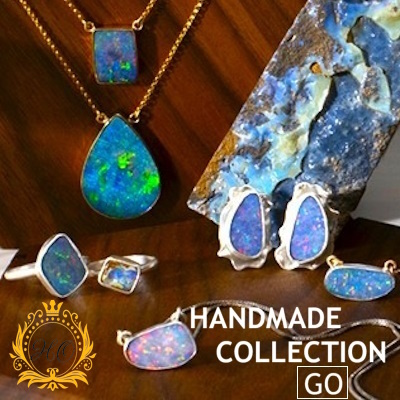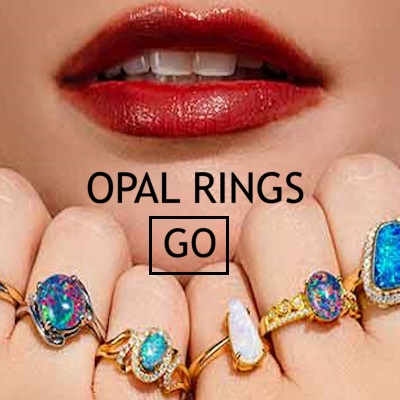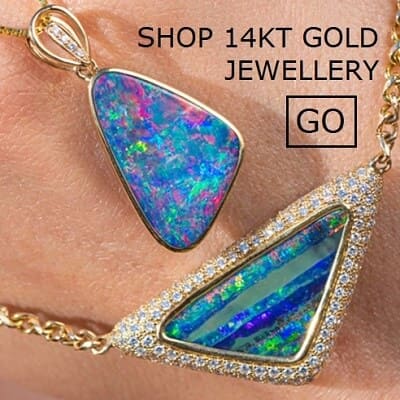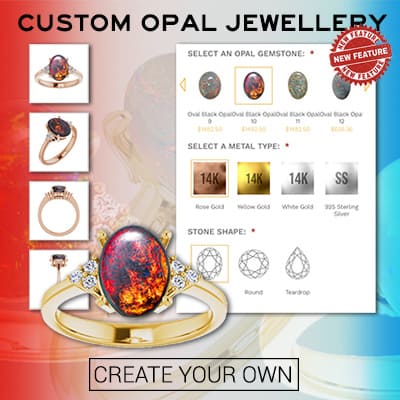What is Gold Opal Jewelry? Understanding Its Beauty and Value
Posted by AOD on 12th Oct 2025
What is Gold Opal Jewelry? Understanding Its Beauty and Value

Gold opal jewelry turns heads with its luminous colors and shimmering gold settings. Some pieces use 18k gold with 75% pure gold, which gives a richer color than most people ever realize. But the real spark comes from inside the stone. The opal’s colors shift and dance every time you move, making each piece completely unique and impossible to copy.
Table of Contents
- Defining Gold Opal Jewelry: Composition And Characteristics
- The Allure Of Opals: Why They Are Coveted In Jewelry
- Gold Settings: Enhancing Opal’s Natural Beauty
- Ethical Considerations In Sourcing Gold And Opals
- Caring For Gold Opal Jewelry: Ensuring Longevity And Shine
Quick Summary
| Takeaway | Explanation |
|---|---|
| Gold opal jewelry combines luxury and beauty. | These pieces feature opals set in gold, creating a stunning visual display. |
| Opal’s play-of-color determines its value. | Brightness, variety, and clarity of colors affect how an opal is valued. |
| Protect opals with proper settings. | Gold settings safeguard opals from damage while enhancing their beauty. |
| Responsible sourcing is crucial. | Ethical mining practices ensure environmental protection and fair treatment of communities. |
| Care for opal jewelry carefully. | Opals require gentle cleaning and storage to maintain their unique beauty and integrity. |
Defining Gold Opal Jewelry: Composition and Characteristics
Gold opal jewelry represents a stunning fusion of precious metal and mesmerizing gemstone, creating pieces that capture both elegance and natural beauty. At its core, this type of jewelry involves setting opals within gold settings, typically using 14k or 18k gold to showcase the stone’s unique optical properties.
Below is a comparison table highlighting the characteristics and differences between 14k and 18k gold as used in gold opal jewelry.
| Gold Karat | Purity (% of Gold) | Color Characteristics | Durability | Value/Affordability |
|---|---|---|---|---|
| 14k Gold | 58.5% | Slightly lighter/yellow | High | More affordable, strong |
| 18k Gold | 75% | Richer/deeper yellow | Moderate | Higher value, increased purity |
The Precious Metal Foundation
Gold serves as the critical structural element in these jewelry pieces, providing both aesthetic appeal and durability. The karat of gold significantly influences the jewelry’s overall quality and value.
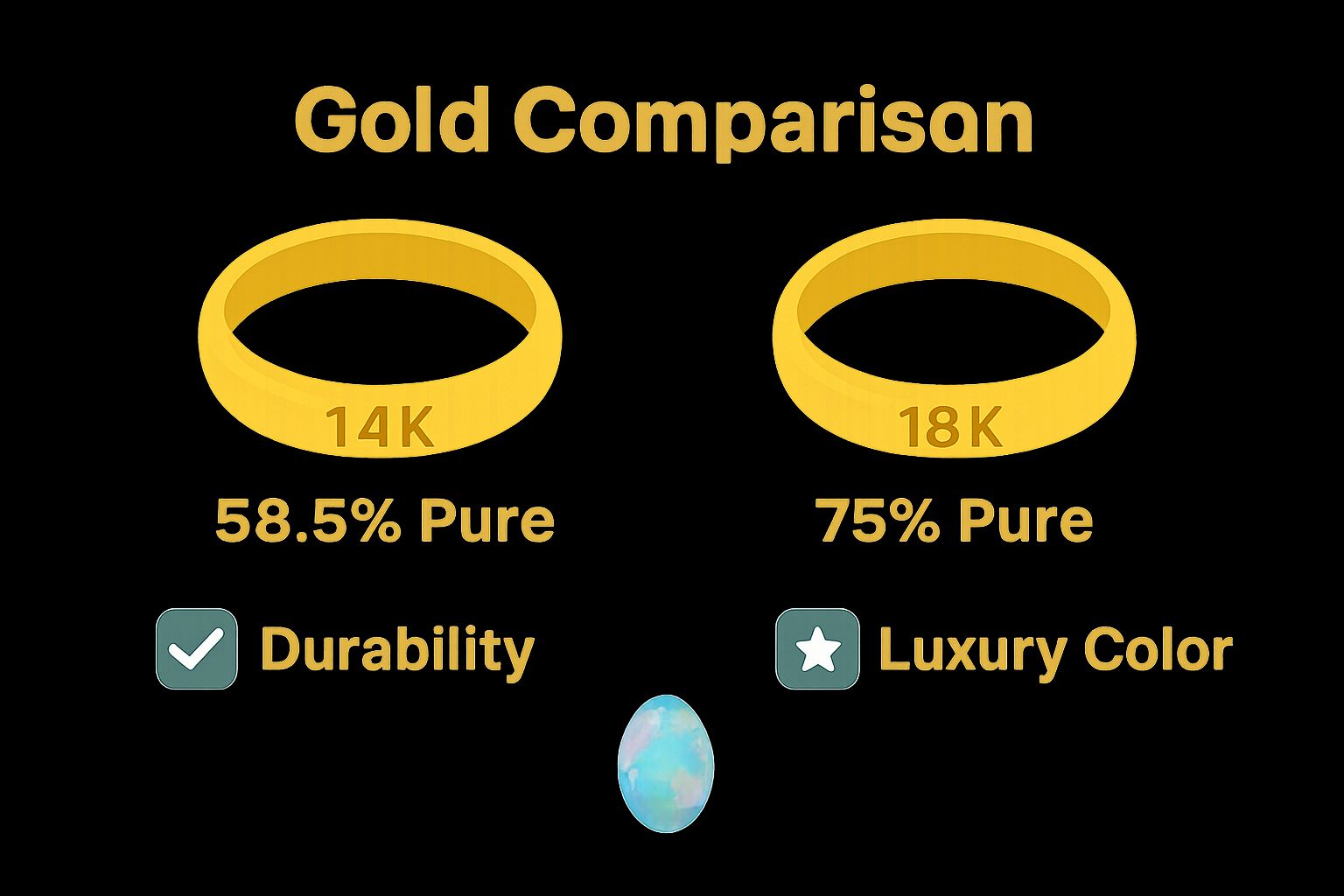 14k gold, containing 58.5% pure gold, offers an excellent balance between strength and affordability, while 18k gold with 75% pure gold provides a richer color and increased purity.
14k gold, containing 58.5% pure gold, offers an excellent balance between strength and affordability, while 18k gold with 75% pure gold provides a richer color and increased purity.
Opal’s Unique Characteristics
Opals are extraordinary gemstones known for their play-of-color, an enchanting optical phenomenon where vibrant color flashes emerge from within the stone. According to Geology.com, opals are hydrated forms of silica with a unique internal structure that creates these remarkable color displays. The value of an opal depends on several critical factors:
- Brightness of color display
- Diversity and pattern of color shifts
- Body tone (darkness or lightness of the stone)
- Overall clarity and transparency
Setting and Craftsmanship
Creating gold opal jewelry requires exceptional skill and precision. Jewelers must carefully select and mount opals to protect their delicate structure while maximizing their visual brilliance. The setting technique can dramatically influence how light interacts with the stone, enhancing or diminishing its natural iridescence.
Each piece of gold opal jewelry tells a unique story, blending the warm luminescence of gold with the dancing, ethereal colors of the opal. Whether used in rings, pendants, or earrings, these pieces represent a harmonious marriage of natural beauty and human craftsmanship.
The Allure of Opals: Why They are Coveted in Jewelry
Opals possess an extraordinary mystique that has captivated jewelry lovers, collectors, and gemstone enthusiasts for centuries. Unlike other gemstones, opals offer a mesmerizing display of colors that seems to dance and shift with every movement, creating a truly unique visual experience.
The Magic of Play-of-Color
The most compelling characteristic of opals is their remarkable play-of-color, an optical phenomenon that sets them apart from all other gemstones. When light interacts with an opal’s internal structure, it creates a spectacular display of vibrant colors that appear to move and change depending on the viewing angle. This phenomenon occurs because opals are composed of microscopic silica spheres arranged in a precise, orderly grid.
The intensity and quality of play-of-color can dramatically influence an opal’s value and desirability. Some key factors that determine the beauty of this effect include:
- Brightness and vibrancy of color shifts
- Range of colors displayed
- Consistency of color patterns
- Clarity of color transitions
Cultural and Historical Significance
Opals have been treasured throughout human history, with significance far beyond their visual appeal. Ancient cultures attributed mystical and healing properties to these stones, viewing them as symbols of hope, creativity, and emotional expression. In many traditions, opals were considered talismans of good fortune and protection.
The rarity of high-quality opals, particularly those from specific geological regions like Australia’s Lightning Ridge, contributes to their allure. Australian black opals, known for their intense and dramatic color play, are especially prized among collectors and jewelry designers.
Emotional and Artistic Connection
Beyond their physical beauty, opals represent a profound connection between natural wonder and human creativity. Each opal is essentially a unique work of art, with color patterns that can never be exactly replicated. Jewelry designers are drawn to opals because they offer an opportunity to create pieces that are not just accessories, but wearable expressions of nature’s most unpredictable and stunning artistry.
The emotional resonance of opals lies in their ability to capture light, movement, and transformation in a single, breathtaking gemstone. Whether set in delicate rings, statement necklaces, or elegant earrings, opals continue to enchant and inspire those who appreciate true natural beauty.
Gold Settings: Enhancing Opal’s Natural Beauty
Gold settings represent far more than mere metallic frames for opals—they are sophisticated architectural elements designed to protect, showcase, and elevate these extraordinary gemstones. The intricate relationship between gold and opals transforms jewelry from simple accessories into wearable art pieces that celebrate natural beauty.
Protective Design and Structural Integrity
Gold settings serve a critical function in preserving an opal’s delicate structure. Opals are relatively soft gemstones, with a Mohs hardness ranging between 5.5 and 6.5, making them susceptible to scratches and impacts. According to Metallos Jewelry Research, gold settings provide a protective embrace that shields opals from potential damage while allowing maximum light interaction.
The setting design can dramatically influence an opal’s visual presentation:
- Bezel settings that wrap metal around the stone’s perimeter
- Prong settings that lift and expose more of the opal
- Closed settings that offer maximum protection
- Open settings that maximize light penetration
Aesthetic Complementation
The color and tone of gold interact uniquely with different opal varieties, creating nuanced visual experiences. Yellow gold tends to complement warm-toned opals, enhancing their internal fire, while white gold or platinum can create a striking contrast with darker or more vibrant opals.
Gold karat selection plays a significant role in both durability and aesthetic appeal. While 14k gold offers excellent strength, 18k gold provides a richer color that can beautifully frame an opal’s intricate color play. Some jewelers even use rose gold to create a romantic, soft backdrop for more delicate opal specimens.
Craftsmanship and Precision
Crafting gold opal settings demands extraordinary skill. Jewelers must understand the stone’s unique properties and design settings that not only protect but also celebrate the opal’s inherent beauty. Precision is paramount—even minimal errors in setting can compromise the stone’s structural integrity or diminish its spectacular color display.
Each gold setting becomes a personalized stage for the opal, allowing its natural wonder to shine while providing the necessary protection to preserve its magical qualities. The result is a harmonious fusion of precious metal and extraordinary gemstone that transcends traditional jewelry design.
Ethical Considerations in Sourcing Gold and Opals
The journey of creating gold opal jewelry extends far beyond aesthetic beauty, encompassing complex ethical considerations that impact mining communities, environmental sustainability, and global mineral trade practices. Responsible sourcing has become increasingly critical as consumers demand transparency and social accountability from the jewelry industry.
Environmental and Social Impact
Gold and opal mining can have profound environmental and social consequences when conducted without proper oversight. Mining operations frequently disrupt local ecosystems, potentially causing soil erosion, water pollution, and habitat destruction. Indigenous communities often bear the most significant burden of these environmental challenges.
Key ethical challenges in mineral sourcing include:
- Minimizing ecological disruption during extraction
- Ensuring fair compensation for local mining communities
- Preventing child labor and unsafe working conditions
- Protecting indigenous land rights
- Implementing sustainable restoration practices
Traceability and Certification
As consumer awareness grows, the jewelry industry has responded by developing robust traceability mechanisms. Certification programs now help verify the origin and ethical standards of precious metals and gemstones. Responsible sourcing certifications provide crucial mechanisms for:
- Documenting mineral origins
- Verifying fair labor practices
- Ensuring environmental conservation standards
- Preventing conflict mineral trade
Sustainable Mining Practices
Progressive mining operations are increasingly adopting holistic approaches that balance economic development with environmental stewardship. This involves implementing advanced technologies that minimize ecological impact, investing in local community infrastructure, and creating transparent supply chains.
Ethical gold and opal sourcing is not just about avoiding harm but actively contributing to positive social and environmental outcomes. Responsible jewelers now view their role as stewards of both natural resources and human communities, recognizing that true luxury encompasses more than visual beauty—it represents a commitment to global sustainability and social justice.
Caring for Gold Opal Jewelry: Ensuring Longevity and Shine
Gold opal jewelry represents a delicate intersection of precious metal and fragile gemstone, requiring specialized care to preserve its extraordinary beauty and structural integrity. Understanding the nuanced maintenance requirements ensures these exquisite pieces remain vibrant and stunning for generations.
Understanding Opal’s Delicate Nature
Opals are remarkably sensitive gemstones, with unique compositional characteristics that demand gentle handling. Their hydrated silica structure makes them susceptible to environmental changes, requiring precise care strategies. Opals can easily lose their brilliance or develop structural damage if exposed to inappropriate conditions.
Critical environmental factors that impact opal jewelry include:
- Extreme temperature fluctuations
- Direct sunlight exposure
- High humidity or extremely dry conditions
- Chemical interactions
- Mechanical stress
Cleaning and Maintenance Techniques
Proper cleaning of gold opal jewelry requires a nuanced approach that balances thoroughness with extreme gentleness. Soft, non-abrasive materials are essential when maintaining these delicate pieces. Recommended cleaning practices involve:
- Using lukewarm water
- Applying mild, pH-neutral soap
- Employing soft microfiber cloths
- Avoiding harsh scrubbing techniques
- Patting dry with clean, soft fabric
Storage and Protection Strategies
Protecting gold opal jewelry extends beyond cleaning—it requires thoughtful storage and handling practices.
The following table summarizes key care factors and strategies crucial for maintaining the quality and beauty of gold opal jewelry.
| Care Aspect | Recommendations | Reasons |
|---|---|---|
| Cleaning | Use lukewarm water, mild soap, soft cloth | Prevents scratching, maintains brilliance |
| Handling | Handle gently; avoid mechanical stress | Opal’s delicate structure susceptible to damage |
| Storage | Store individually in padded, humidity-controlled area | Protects against scratches, preserves moisture |
| Environmental Exposure | Avoid sunlight, temperature extremes, and harsh chemicals | Prevents fading, cracking, and chemical damage |
| Professional Checks | Periodic jeweler inspections | Ensures setting security and opal condition |
Additional protective measures include keeping jewelry away from direct sunlight, avoiding exposure to cosmetics and harsh chemicals, and removing pieces during physical activities that might cause impact or excessive sweating. Professional jewelers recommend periodic professional inspections to assess the setting’s integrity and the opal’s condition, ensuring these precious pieces continue to captivate and inspire for years to come.
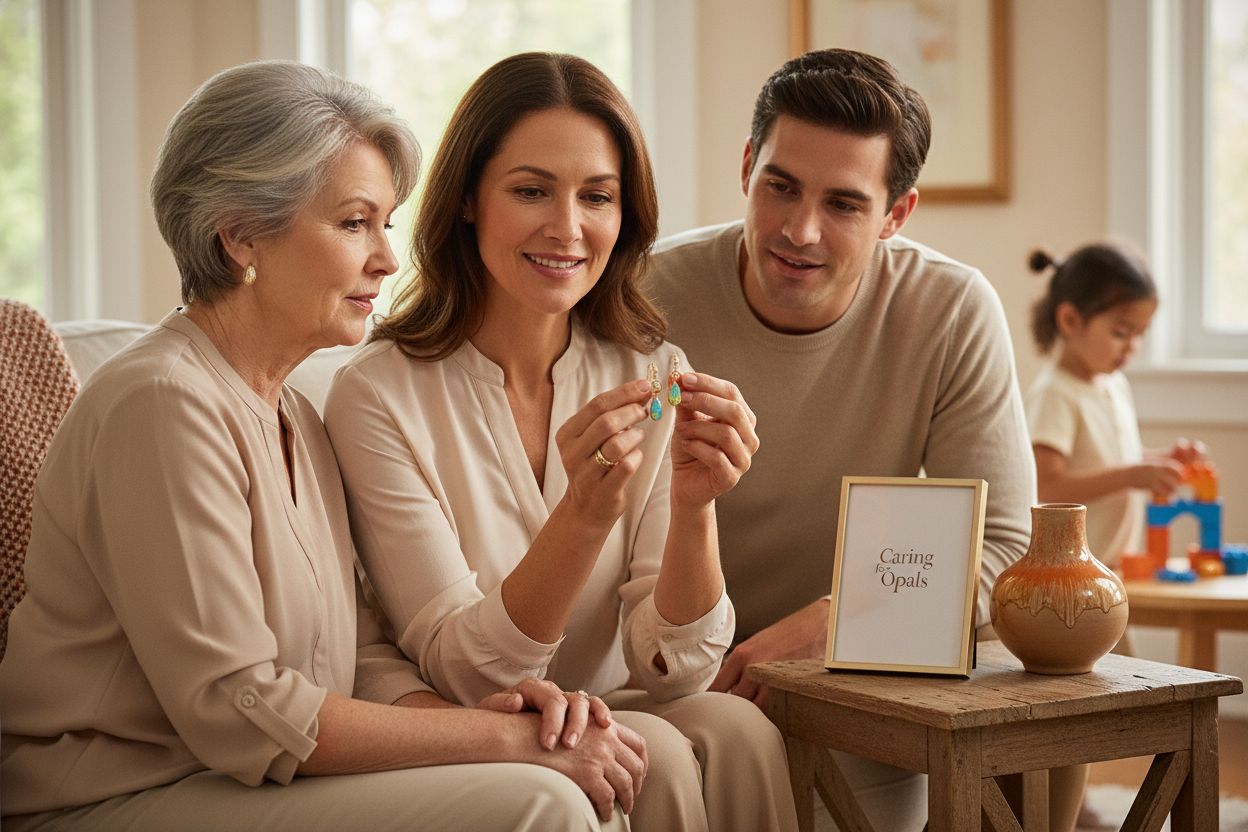
Discover the True Value of Gold Opal Jewelry With Authentic Australian Opals
Have you fallen for the luminous beauty and unique craftsmanship described in our article on gold opal jewelry? If you are searching for rare opals with vivid play-of-color, responsibly sourced materials, and artistry that truly honors each gemstone, you deserve more than generic or mass-produced pieces. Many jewelry buyers struggle to find real, ethically sourced gold opal jewelry where both opal quality and gold setting are certain, and the story behind each piece adds emotional meaning and lasting value.

Explore Australian Opal Direct for a curated selection of earth-mined Australian opals set in gold, designed with both beauty and longevity in mind. Our collections bring you the spirit of Australia’s Lightning Ridge, Coober Pedy, and Queensland, with every piece guaranteed for authenticity and ethical sourcing. Shop confidently knowing you connect directly with miners, enjoy customer stories, and benefit from exclusive offers. Visit our collections of gold opal jewelry, experience the rare glow of Nature’s Light, and find your next signature piece today while supplies last.
Frequently Asked Questions
What materials are used in gold opal jewelry?
Gold opal jewelry typically uses 14k or 18k gold for the settings, which underpin the opals. Choose gold settings based on desired durability and aesthetic, with 18k gold offering a richer color and more pure gold content.
How can I determine the value of gold opal jewelry?
The value of gold opal jewelry is influenced by the opal’s play-of-color, brightness, body tone, and overall clarity. Assess these characteristics carefully before making a purchase to ensure you understand the quality and uniqueness of the piece.
What care is required for maintaining gold opal jewelry?
Caring for gold opal jewelry involves gentle cleaning with mild soap and soft, non-abrasive materials. Store pieces individually in padded environments and monitor their condition to preserve their beauty for years to come.
What makes opals in gold jewelry unique compared to other gemstones?
Opals are unique due to their extraordinary play-of-color, which sets them apart from other gemstones in jewelry. Emphasize this feature while selecting jewelry, as it creates a one-of-a-kind visual experience that can’t be replicated.
How does the setting affect the appearance of gold opal jewelry?
The type of setting, whether bezel, prong, or closed, can significantly impact how light interacts with the opal, thereby enhancing or diminishing its color display. Consider various setting styles to find one that maximizes the opal’s natural brilliance.

